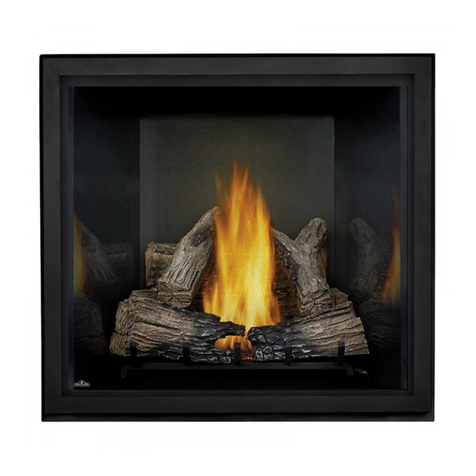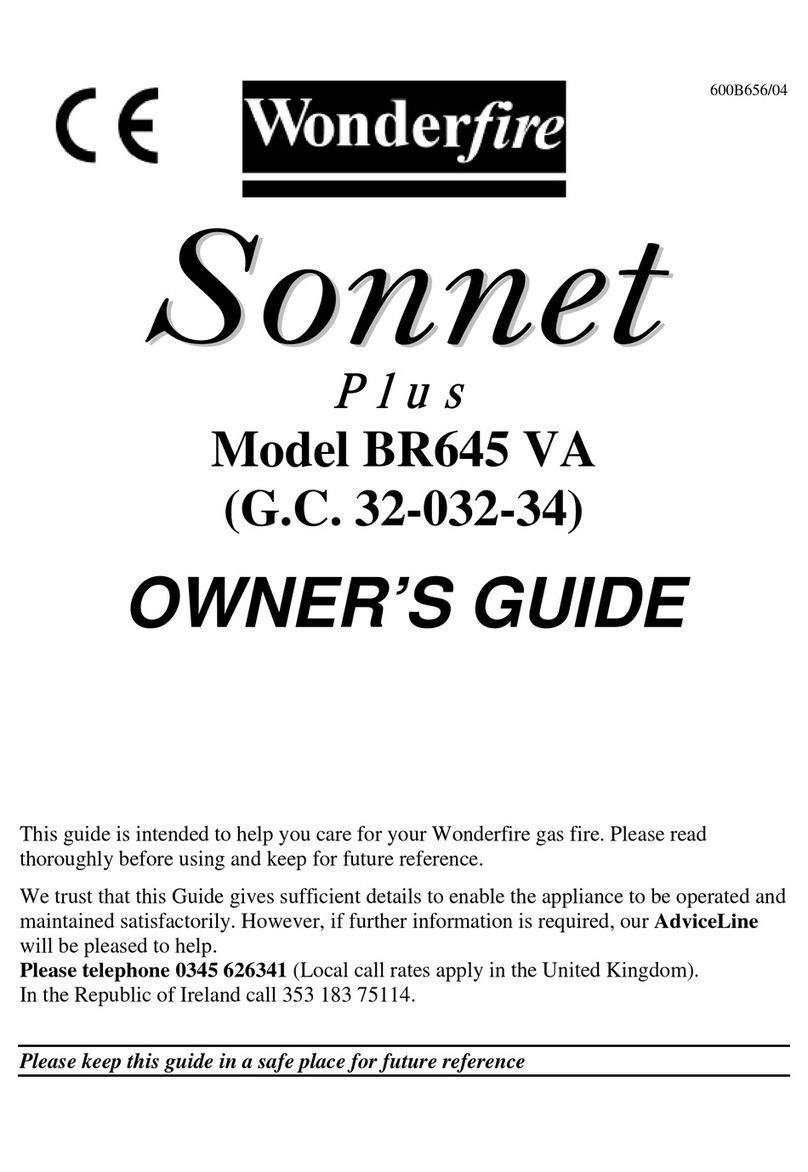
OPERATI G THE FIRE (SLIDE CO TROL MODELS)
The controls comprise a control lever, to turn the fire on and off and adjust the gas
rate, and a flame adjuster to alter the flame picture. The control lever is located at
the top right hand side of the fire. Depressing the control lever fully operates the
igniter and lights the pilot flame and ignition rate gas. Once the pilot is established
raising the lever allows medium and finally high gas settings. The fire is turned off
when the control lever is fully raised.
The flame adjuster is located behind the ashpan cover. Sliding the adjuster to the
left hand position gives maximum radiant heat output whereas the right hand
position gives more flame with slightly less glow. To light the fire proceed as
follows:-
1) Depress the control lever fully downwards to the position marked “Z”. Hold
down the control lever for a few seconds to allow the gas to reach the pilot.
2) The fire will then begin its ignition sequence. If the pilot does not light,
continue to press the control lever until ignition occurs. The pilot flame can
be seen by looking underneath the front ceramic rail, above the burner heat
shield, at the front left hand side of the fuel. When the pilot has lit, continue
to hold the control lever down for 5-10 seconds to allow the thermocouple to
heat up, before releasing the lever apply one firm downwards push to ensure
that the f.s.d. valve is fully latched, if the pilot goes out when the control
lever is released, repeat the lighting sequence.
In the unlikely event of a failure of the igniter, firstly check the operation of the
1.5V battery and if necessary replace with a ‘AA’ size alkaline battery. It is impor-
tant that only an alkaline battery is used, otherwise premature battery failure
and leakage may result. If the appliance still fails to light the fire can be lit as
follows:
Depress the control lever fully downwards to the position marked “Z”. Hold in
position for a few seconds to allow the gas to reach the pilot. Insert the tip of a lit
taper or spill between the front ceramic and burner heat shield. This will light the
pilot flame and low rate gas. When the pilot has lit, continue to depress the control
lever in for 5-10 seconds to allow the thermocouple to heat up before releasing the
control lever apply one firm downwards push to ensure that the f.s.d. valve is fully
latched.
3) After lighting, move control lever up to the high position and the main burner
will light. It is recommended that for the most efficient performance the fire is
allowed to warm up for a few minutes with the flame adjuster set to the left
hand position and the control lever set to high.
4) The gas control can be moved from the High to Low position to give the
desired heat output and the flame control adjusted to give the most pleasing
flame effect or maximum glow.
5) To turn the fire off, FULLY raise the control lever to the OFF position.
5




























